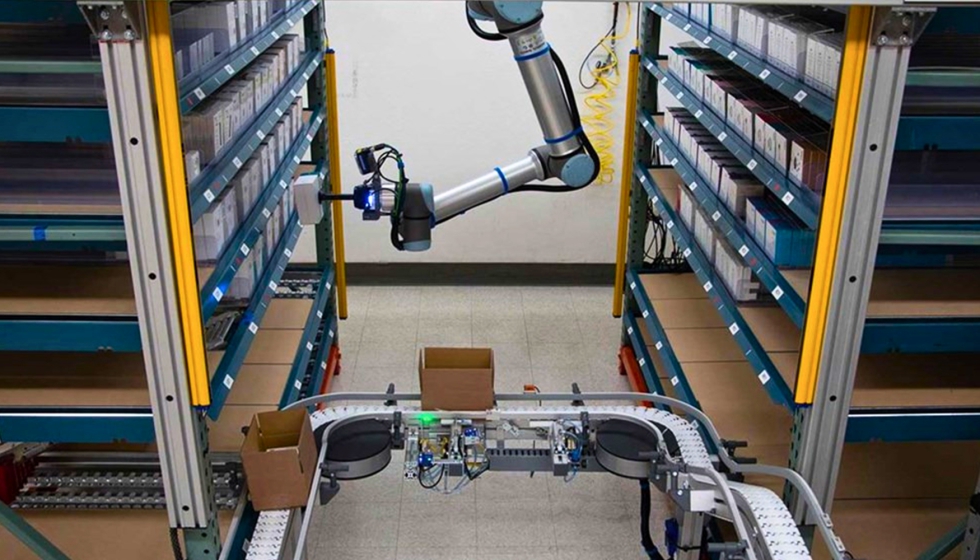Automatic, flexible and constant: the picking of the future relies on cobots
2023-02-24
The level of complexity of logistics operations requires flexibility and reactive capacity, and people are indisputable in that. But what if the support of technology allowed us not only to match these capabilities but also to increase efficiency and productivity?

I encourage you to enter with me in a state-of-the-art logistics warehouse. We will see robotic arms, autonomous mobile robots and artificial intelligence. Everything to prepare orders faster and more sustainably. In short, to make logistics processes more competitive.
Why is this improvement of competitiveness in the sector necessary? To begin with, due to the unstoppable boom of ecommerce, which has led to numerous challenges: a higher turnover of products, lower volume batches, a higher rate of returns … In parallel, the time to market has been reduced and the lack of space in warehouses has become more acute.
These limitations have increased the pressure on logistics processes. Optimizing them has become the only way not to be left behind. And all of the above, added to the shortage of qualified personnel, has forced us to think about automated solutions.

But can automation achieve the adaptability of a human operator when performing picking tasks? Numerous solutions show us that yes.
At the hardware level, we can highlight collaborative robotics. Its simple programming and its security functions, which avoid having to resort to perimeter fences, bring flexibility to an automated picking solution. So much so that we could mount a robotic arm on a table with wheels so as not to have to adapt production to a fixed installation. Therefore, they perform perfectly in the changing logistics environments.
But the possibilities of cobots multiply when we add artificial intelligence to them. Solutions such as those from Righthand Robotics or Siemens use algorithms so that a Universal Robots cobot can perform the picking of a product even if it has never seen it before.
The potential of collaborative robotics is also multiplied by shipping the cobot on a mobile platform. An example is Robotnik’s RB-KAIROS+ solution. By expanding the working area of the cobot, mobile manipulators reduce the costs associated with automation. In addition, they reduce operating times and can share workspace with humans.
By combining all these elements into on-demand solutions that are already working in real production environments, we can say yes: automated warehouses are a reality.




